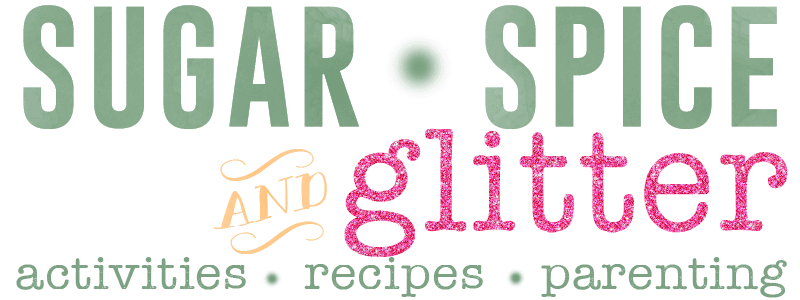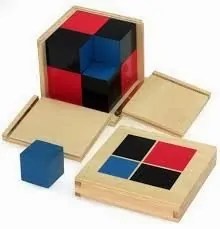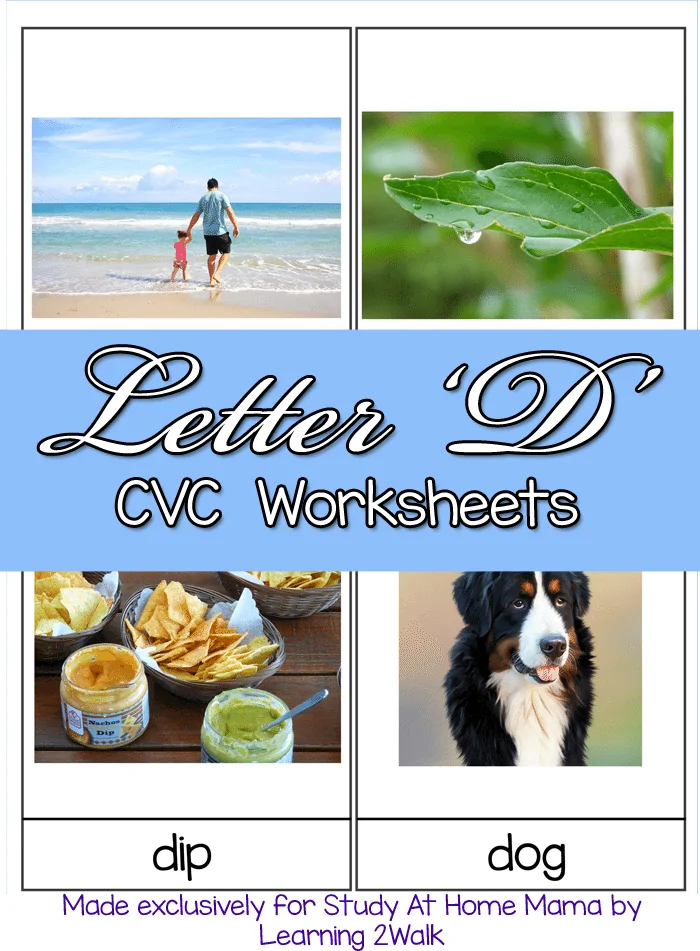Montessori Binomial Cube
The Binomial Cube is one of the most iconic Montessori materials, after the Pink Tower. In my city, it is actually used on the signs for the local Montessori schools. It was one of the materials that I was most excited to purchase for Ella — though I do absolutely think that it could be DIYed for someone who was unable to find it affordably.
The Binomial Cube is a Primary (3-6) material that some schools (and albums) will bring back in the Elementary years. I know that I was initially shocked at the idea of toddlers and preschoolers being immersed in algebraic concepts, but this is the genius of Montessori. Its important to note, right from the start, that children at this age are not expected to understand or even be exposed to the algebraic formula that the cube expresses, but are rather just “absorbing” the concepts and building an enjoyment of expressing and discovering mathematical concepts.
Children should be focusing on patterning and ordering the blocks, and making connections as to the relationships between the different cubes: dimension, colour, and shape. It may be helpful for parents to think of the material as a puzzle, if the mathematical concepts behind the material seem too complex.
The key phrase that we use when putting together the binomial cube is “like touches like.” This helps with later algebraic understandings.
As a Sensorial or early Math material, the child can learn sorting, differentiation, counting, fractions, basic arithmetic, and various vocabulary concepts.
Basically, a binomial formula is a way of expressing and investigating how “powers” affect basic equations; in this instance, it is an algebraic expression of the volume of a cube — which many of us only grew up seeing as “length x width x height”. Other binomial formulas have a wide variety of practical applications; it is the basis for a greater understanding of geometry, chemistry, physics, and economics; I often see variations of it during probability assessments.
Although the child never needs to do this work, the mathematical expression of the cube is simply an exercise in volume; I would merely need to count the number of “a” sides and “b” sides and insert them into the binomial cube equation.
When the cubes are properly placed, we have 6 “a”, 6 “b”, and 12 “ab” which looks like this as an equation:
In Elementary, its important for the child to observe these coloured sides as “a”, “b”, and “ab” but it is not necessary for them to actually do the equation.
To present the Binomial Cube:
In Primary:
https://www.youtube.com/watch?v=D9Bvi00xlns
It is important to note that this video is visually accurate, however, the explanation given is for YOUR benefit — the explanation should not be given to the child.
In Elementary:
https://www.youtube.com/watch?v=1tSknWscY4g
I love how this video demonstrates how to involve elementary children into the discovery of the binomial cube.
And beyond — into upper elementary and high school!
http://montessorimuddle.org/2012/02/02/using-the-binomial-cube-in-algebra/
What are your thoughts on the Binomial Cube? Are you comfortable and confident presenting it to your child?



Just to clarify – the school logo is actually the Trinomial Cube, as it has the third layer. My little guy has been working with the Binomial Cube this year and I love that he’s being exposed to mathematical concepts that many traditional curricula (is that spelled correctly? I didn’t take latin!) would not deem appropriate for a four year old!
Thanks, Blythe!